Let’s explore the evolution of IBM AS/400
The IBM i operating system, previously referred to as AS400 (Application System/400) and iSeries, is a dependable and robust system that caters to numerous applications. It is recognized for its user-friendly interface, trustworthiness, and compatibility with previous versions. This makes it possible for businesses to execute essential operations without any issues.
IBM has updated the server and operating system over time to showcase the platform’s exceptional features. Every version has provided improvements and support for evolving business requirements.
AS/400 Overhauls and Rebranding
IBM i’s simplicity, power, and reliability is remarkable. Today, there are more than 18,000 applications that operate on this platform. It is continuously evolving, and yet it maintains support for proven applications written over 30 years ago that are still operating critical business processes at organizations worldwide.
Over the years, IBM has changed the name of their operating system and server multiple times. This has caused some confusion and sparked heated conversations within the user community, with some questioning “whether the AS/400 is dead”?
However, these changes were made for a reason – to meet the evolving business needs of customers, showcase new technology in the latest release, and differentiate this platform from others at IBM.
Let’s get started.
Here is a timeline of the history of IBM i series of operating systems developed by IBM for their midrange computers:
In 1978 – System/36
IBM introduced System/36 as a midrange computer for general business and to provide services to small businesses. This server was a flat file system, and the primary programming language was RPG II.
In 1983 – System/38
IBM introduced the System/38 computer for businesses and departments. It runs on an object-based OS (Operating System) and includes a relational database now known as DB2. The job management concepts were used in the AS/400 system.
In 1988 – AS/400
IBM introduced in June the AS/400 as a midrange computer that replaced the System/38 and supported System/36. It had an integrated relational database called Db2 and used an object-based operating system, making it an advanced business computer.
In 2000 – eServer iSeries
IBM rebrands the AS/400 as the “eServer iSeries,” highlighting its integration capabilities and e-business readiness.
In 2006 – System i
The iSeries server was then called IBM System i (IBM I V5R4) with i5/OS as its operating system. System i, running on the i5/OS operating system, is positioned as a comprehensive Windows alternative for small and medium-sized businesses.
In 2008 – IBM Power System
IBM merged System i and System p (Power Systems) into a single product line, known as IBM Power System (IBM i 6.1). i5/O5 was renamed as IBM i, where “i” stands for integration.
In 2010 – IBM i 7.1
IBM renamed the platform as “IBM i 7.1” to emphasize its integration capabilities and the significance of the operating system.
In 2014 – IBM i 7.2
IBM announced the IBM i 7.2 operating system with enhancements in areas such as security, cloud integration, and analytics.
In 2016 – IBM i 7.3
IBM released IBM i 7.3 with features such as enhanced support for open-source technologies and enhanced integration with the cloud.
In 2019 – IBM i 7.4
IBM introduced IBM i 7.4, highlighting its modernization capabilities, including enhanced AI and machine learning integration, as well as enhanced security features.
In 2022 – IBM i 7.5
IBM announced that the newest IBM i Operating System i 7.5 will be supported up to year 2030 and beyond. IBM is already working on the next version of IBM i, which will help the platform be fully robust until the mid-2030s and introduced several security changes to the operating system.
Related Posts –
AS400 Systems [iSeries (IBM i)] – Explore its Full Potential with Future Proofing
Embracing IBM AS400 System’s Legacy, Innovation, and Future
Why Should You Invest in AS400 ERP?
Is AS400 Software same as IBM i? Yes or No, Understand Here!
What programming languages can be used on AS/400?
Programming languages for the AS400 iseries include RPG, assembly language, C, C++, Pascal, Java, EGL, Perl, Smalltalk, COBOL, SQL, BASIC, PHP, PL/I, Python and REXX. CA Plex (formerly AllFusion Plex), Synon, IBM Rational Business Developer Extension, Accelerator, LANSA, Uniface and GeneXus are available.
There is a complete layer called PASE to help to connect anything from AIX to IBM i with minimal effort.
Final Thoughts…
The history of the AS/400 overhauls and rebranding efforts showcases IBM’s commitment to meeting the ever-changing needs of businesses.
From its humble beginnings as the AS400 iseries to its current status as part of the IBM Power Systems family, this platform has continually adapted to the changing technology landscape.
As businesses continue to utilize robust computing solutions, exploring the history of the AS/400 and its transformations can provide valuable insight into the evolution of enterprise computing.
If you are a technology leader or a business owner who has been using this technology, understanding its journey is a fascinating and captivating endeavour.
Work with Us…
We are Integrative Systems, an (AS400 iSeries) IBM i consulting and implementation partner to global clients with 20+ years of experience.
Bring on your AS/400 project ideas and we will create a strategic plan to help you succeed.
Drop us a line at contact@integrativesystems.com and our experts shall connect with you in the next two business days.

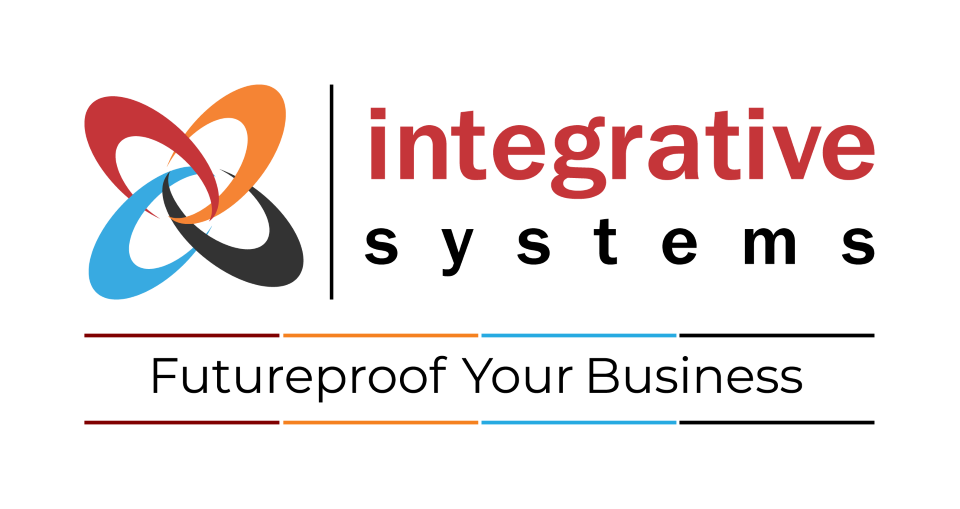

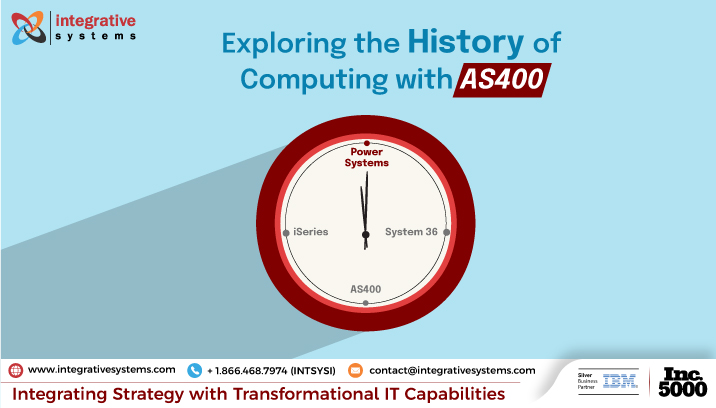
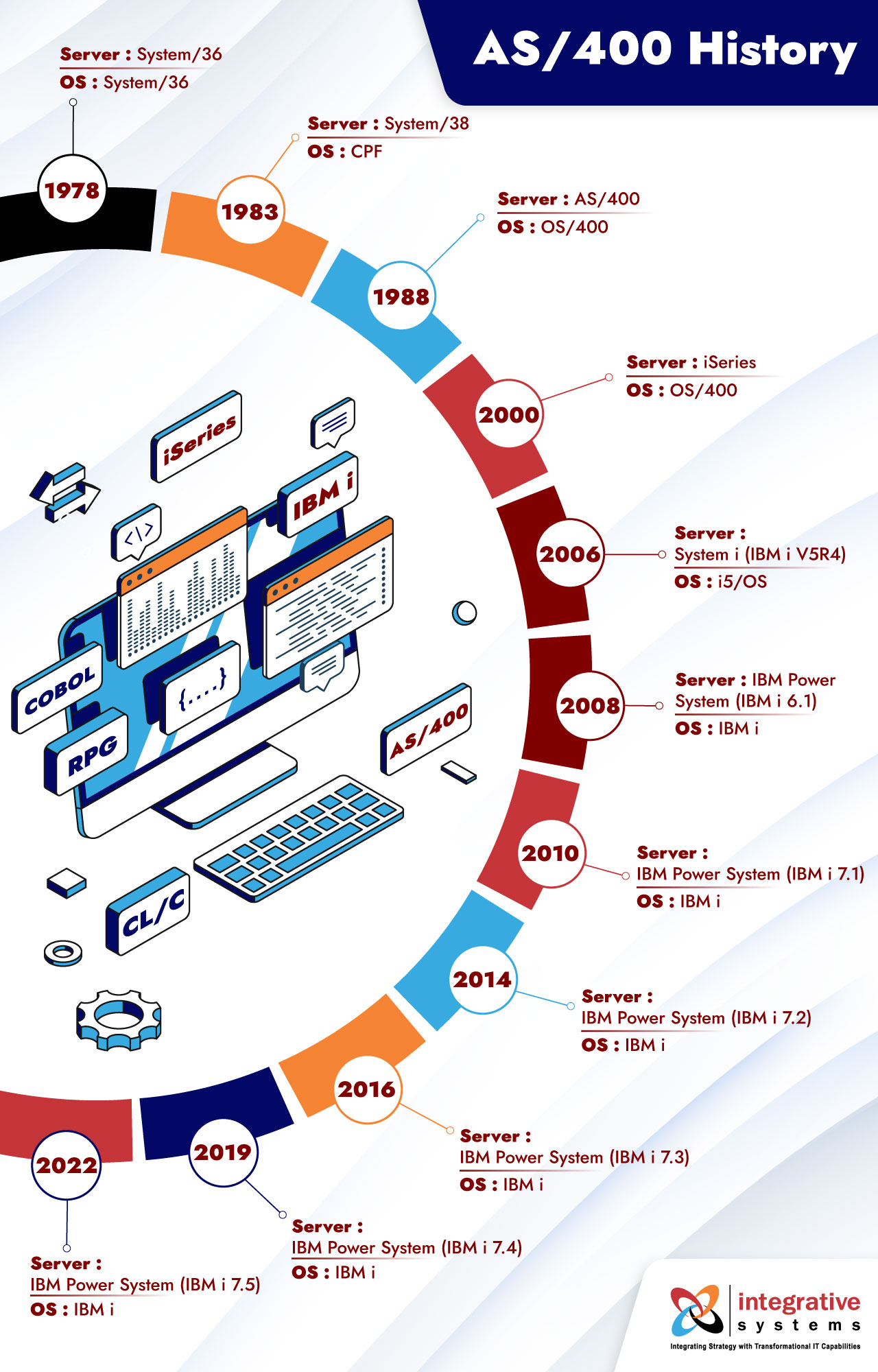

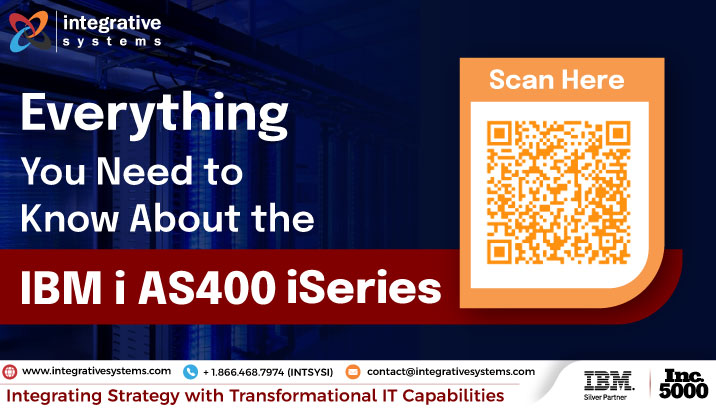
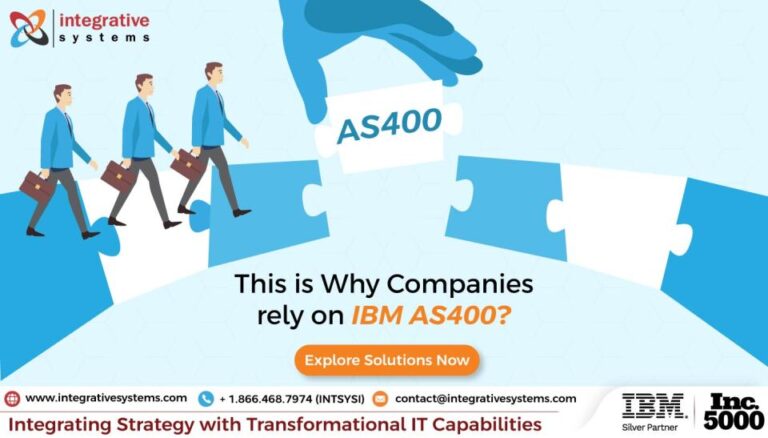

7 Comments to “IBM i (AS/400) History – The Evolution of Computing”
Wilson
Great read! It’s fascinating to see how the AS/400 evolved into the IBM i. The legacy of this platform truly underscores its impact on enterprise computing. Thanks for sharing insights on this journey!
Drake Oakley
This post beautifully captures the evolution of AS/400 into IBM i. It’s fascinating to see how the platform has adapted over the years while maintaining its core strengths. I appreciate the insights on both its legacy and future potential!
Ruben Sanchez
This post beautifully captures the evolution of the AS/400 into the IBM i. It’s fascinating to see how a system that began decades ago has adapted and remained relevant in today’s technology landscape. Thank you for highlighting its legacy and ongoing significance!
Emily Baker
Great read! It’s fascinating to see how the AS/400 has evolved into IBM i, blending tradition with modern capabilities. It’s amazing to think about the impact this platform has had on businesses over the decades. Looking forward to more insights on its future!
Amelia Jackson
This post beautifully summarizes the evolution from AS/400 to IBM i! It’s fascinating to see how this platform has adapted over the years while maintaining its core strengths. I’m particularly intrigued by the ongoing support for modern applications and the integration capabilities with cloud services. Great read!
Charlotte Adams
Great post! It’s fascinating to see how far IBM i has come from its AS/400 roots. The evolution of this platform really highlights the resilience and adaptability of technology over the years. Looking forward to more insights like this!
Emma Johnson
What a fascinating journey through the evolution of AS/400 to IBM i! It’s impressive to see how this platform has adapted to changing technologies while maintaining its core strengths. The insights on modernization strategies were particularly helpful for those of us still working with legacy systems. Looking forward to more posts on this topic!